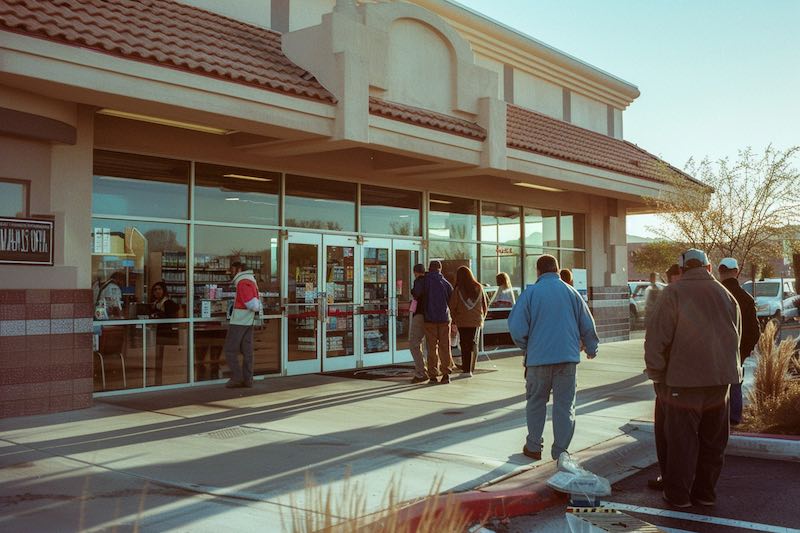Opioids
powerful pain medications misused by millions
- Opioids Addiction
- Symptoms & Effects
- Withdrawal Timeline
- Treatment & Detox
- Opioids Addiction
- Symptoms & Effects
- Withdrawal Timeline
- Treatment & Detox
Opioids are a class of drugs that include both legal prescription medications and illegal substances. They are known for their pain-relieving properties, but they also have a high potential for addiction and abuse. The term “opioids” encompasses both opiates, which are derived naturally from the opium poppy, and synthetic or semi-synthetic medications that mimic the effects of natural opiates.
In This Page

Opioids Addiction Treatment Center
Still Detox recognizes that medical detox is an effective and safe way to help individuals suffering from opioids addiction, and emphasizes the importance of proper assessment and monitoring by a qualified medical professional during the detoxification process to ensure the safety and comfort of those struggling with opioids addiction.
What Are The Types opioids?
| Type of Opioid | Example Drugs |
|---|---|
| Natural Opiates | Morphine, Codeine |
| Semi-Synthetic Opioids | Oxycodone, Hydrocodone, Hydromorphone, Heroin |
| Synthetic Opioids | Fentanyl, Methadone, Tramadol |
| Meperidine | Demerol |
The Opioids Crisis in US
The opioid crisis, often referred to as the opioid epidemic, is a serious public health issue that has been particularly devastating in countries like the United States. It is characterized by a dramatic increase in the use of prescription and non-prescription opioid drugs, leading to a significant rise in overdoses and fatalities. This crisis originated in part due to the over-prescription of opioid pain relievers in the late 1990s, when these medications were aggressively marketed to healthcare providers as non-addictive solutions for pain management. However, over time, it became clear that these drugs were highly addictive, leading to widespread misuse.
The situation was exacerbated by the availability of cheap synthetic opioids like fentanyl, which is far more potent than heroin and morphine. The opioid epidemic has had far-reaching consequences, including a rise in opioid addiction, overdoses, and a subsequent increase in public health and economic burdens.
Efforts to address the crisis include enhancing prescription drug monitoring programs, improving access to treatment and recovery services, promoting the use of overdose-reversing drugs, and supporting research on pain and addiction.
Despite these efforts, the crisis remains a significant challenge, highlighting the need for a comprehensive and sustained response from healthcare providers, policymakers, and communities.
Opioids Addiction Treatment
in Boca Raton, Florida
At Still Detox, we get that everyone dealing with opioid addiction has their own story and challenges. That’s why our detox process is tailor-made for each person. We’re all about helping you get through the detox from opioids with care that’s personal and based on what really works for managing opioid withdrawal.
But detox is just the start. After that, we roll out our full-on addiction recovery program. It’s a mix of one-on-one and group counseling to dig into the deeper issues behind addiction. We also teach ways to prevent slipping back into old habits and keep offering support all through the journey to recovery.


What is a Pill Mill?
Pill mills are essentially illegal setups that look like legitimate medical clinics or pharmacies but are in the business of prescribing and dispensing prescription drugs, mainly opioids, without the right medical oversight. These places focus more on making money than on patient care, often handing out prescriptions for strong painkillers just for cash, while skimping on proper medical check-ups or real pain management approaches.
Their role in the opioid crisis is significant. They make it too easy for people to get their hands on highly addictive meds, leading to higher addiction rates, more overdoses, and increased drug abuse. Law enforcement and regulatory bodies are heavily targeting these pill mills because of their illegal practices and the big part they play in keeping the cycle of drug abuse and addiction going.
What opioid was prescribed in Pill Mills?
During the pill mill crisis, oxycodone was the drug that was commonly prescribed. This drug, known for its powerful properties in combating pain, is found in painkillers like OxyContin and Percocet. The widespread availability of oxycodone, provided so freely, created the benchmark for the widespread misuse of this medication, and this in turn played a major role in the surge of addiction cases.
How long does opioids stay in the system?
| Drug Name | Hair | Saliva | Urine | Blood |
|---|---|---|---|---|
| Drug Name: Morphine | Hair: Up to 90 days | Saliva: Up to 4 days | Urine: Up to 3 days | Blood: Up to 12 hours |
| Drug Name: Oxycodone | Hair: Up to 90 days | Saliva: Up to 48 hours | Urine: Up to 4 days | Blood: Up to 24 hours |
| Drug Name: Heroin | Hair: Up to 90 days | Saliva: Up to 5 days | Urine: Up to 7 days | Blood: Up to 6 hours |
| Drug Name: Fentanyl | Hair: Up to 90 days | Saliva: Up to 72 hours | Urine: Up to 3 days | Blood: Up to 12 hours |
How Typically Opioids Used?
Opioids are typically misused in several ways, which contribute to the high potential for addiction and the risk of overdose. Misuse of opioids often starts with prescribed medications but can lead to more dangerous practices. Common forms of misuse include:
Taking a Higher Dose than Prescribed
Some individuals may take more of the medication than directed by their healthcare provider to achieve a stronger effect.
Taking Medication More Frequently
Using the medication more often than prescribed can lead to tolerance and dependence.
Taking Someone Else’s Prescription
Using opioids that are prescribed for someone else is a form of misuse and is illegal.
Taking Medication for Non-Medical Reasons
Using opioids for the purpose of feeling euphoria or “high” rather than for pain relief.
Altering the Form of the Medication
This includes crushing pills to snort or inject them, which leads to a more intense and immediate effect. This practice is particularly dangerous as it bypasses the intended slow-release mechanism of many opioid medications, leading to a rapid release of the drug into the system.
Combining with Other Substances
Using opioids in combination with other substances like alcohol, benzodiazepines, or other central nervous system depressants increases the risk of dangerous side effects, including respiratory depression, coma, and death.
Street Names Of Opioids
| Drug | Common Street Names |
|---|---|
| Drug: Oxycodone (OxyContin, Percocet) | Common Street Names: Hillbilly Heroin, Oxy, Percs, Roxies |
| Drug: Hydrocodone (Vicodin, Norco, Lortab) | Common Street Names: Vikes, Hydros, Norco, Tabs |
| Drug: Fentanyl | Common Street Names: Apache, China Girl, China White, Dance Fever, Friend, Goodfella, Jackpot, Murder 8, TNT, Tango and Cash |
| Drug: Heroin | Common Street Names: H, Smack, Horse, Dope, Black Tar, Chiva, Junk |
What are most 5 abused opioids in USA
Oxycodone
Oxycodone is a prescription opioid that is commonly abused. It is often prescribed to treat moderate-to-severe pain. In 2022, 3.8 million people aged 12 or older misused oxycodone in the past year.
Hydrocodone
Hydrocodone is another prescription opioid that is commonly abused. It is often prescribed to treat moderate-to-severe pain. In 2022, 3.6 million people aged 12 or older misused hydrocodone in the past year.
Fentanyl
Fentanyl is a synthetic opioid that is 50-100 times more potent than morphine. It is often used to treat severe pain, such as pain from cancer. In 2022, 2.1 million people aged 12 or older misused fentanyl in the past year.
Methadone
Methadone is a synthetic opioid that is often used to treat opioid addiction. In 2022, 1.8 million people aged 12 or older misused methadone in the past year.
Buprenorphine
Buprenorphine is a synthetic opioid that is often used to treat opioid addiction. In 2022, 1.3 million people aged 12 or older misused buprenorphine in the past year.
Opioids Misuse Stats
The number of drug overdose deaths involving opioids, including prescription opioids, heroin, and synthetic opioids like fentanyl, in 2021 was 10 times higher than in 1999. Overdoses involving opioids killed more than 80,000 people in 2021, with nearly 88% of those deaths involving synthetic opioids .(1)
The total number of U.S. overdose deaths involving psychostimulants with abuse potential, including opioids, rose from 547 in 1999 to 23,837 in 2020 and continued to increase to 32,537 deaths in 2021.(2)
Opioid-related deaths have been described as the most lethal drug epidemic in American history, with over 120,000 deaths per year worldwide and 47,000 deaths per year in the U.S.(3)
Substance abuse is widespread, with over 20 million people in the U.S. suffering from substance use disorder, including opioids. (3)
Sources
1. CDC Opioids
2. NIDA NIH
3. National Library of Medicine
Opioids vs Opiates
- Opioids Addiction
- Symptoms & Effects
- Withdrawal Timeline
- Treatment & Detox
- Opioids Addiction
- Symptoms & Effects
- Withdrawal Timeline
- Treatment & Detox
Opioids Addiction Treatment Near Me
Still Detox: A safe and supportive place to heal and grow
At Still Detox Luxury Rehab in Boca Raton, Florida, Our expert team of therapists and practitioners are available 24/7 through our helpline to provide support and guidance to those in need. Don’t wait to seek help – call Still Detox today to start your journey toward sobriety.





